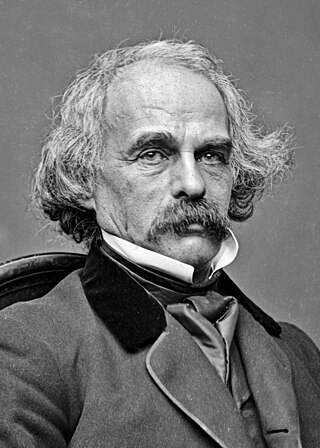
Nathaniel Hawthorne was an American novelist and short story writer. His works often focus on history, morality, and religion.

Hart's Location is a town in Carroll County, New Hampshire, United States. Since 1948, the town has frequently been one of the first places to declare its results for the New Hampshire presidential primary and U.S. presidential elections.

The White Mountains are a mountain range covering about a quarter of the state of New Hampshire and a small portion of western Maine in the United States. They are a subrange of the northern Appalachian Mountains and the most rugged mountains in New England. Several of the higher peaks contain an Alpine tundra. The range is heavily visited due to its proximity to Boston, New York City, and Montreal.

The Marble Faun: Or, The Romance of Monte Beni, also known by the British title Transformation, was the last of the four major romances by Nathaniel Hawthorne, and was published in 1860. The Marble Faun, written on the eve of the American Civil War, is set in a fantastical Italy. The romance mixes elements of a fable, pastoral, gothic novel, and travel guide.

Sophia Amelia Hawthorne was an American painter and illustrator as well as the wife of author Nathaniel Hawthorne. She also published her journals and various articles.

The House of the Seven Gables is a 1668 colonial mansion in Salem, Massachusetts, named for its gables. It was made famous by Nathaniel Hawthorne's 1851 novel The House of the Seven Gables. The house is now a non-profit museum, with an admission fee charged for tours, as well as an active settlement house with programs for the local immigrant community including ESL and citizenship classes. It was built for Captain John Turner and stayed with the family for three generations.

Crawford Notch is a major pass through the White Mountains of New Hampshire, located in Hart's Location. Roughly half of that town is contained in Crawford Notch State Park. The high point of the notch, at approximately 1,900 feet (580 m) above sea level, is at the southern end of the town of Carroll, near the Crawford Depot train station and Saco Lake, the source of the Saco River, which flows southward through the steep-sided notch. North of the high point of the notch, Crawford Brook flows more gently northwest to the Ammonoosuc River, a tributary of the Connecticut River.

The Wayside is a historic house in Concord, Massachusetts. The earliest part of the home may date to 1717. Later it successively became the home of the young Louisa May Alcott and her family, who named it Hillside, author Nathaniel Hawthorne and his family, and children's writer Margaret Sidney. It became the first site with literary associations acquired by the National Park Service and is now open to the public as part of Minute Man National Historical Park.

Twice-Told Tales is a short story collection in two volumes by Nathaniel Hawthorne. The first volume was published in the spring of 1837 and the second in 1842. The stories had all been previously published in magazines and annuals, hence the name.

White Mountain art is the body of work created during the 19th century by over four hundred artists who painted landscape scenes of the White Mountains of New Hampshire in order to promote the region and, consequently, sell their works of art.
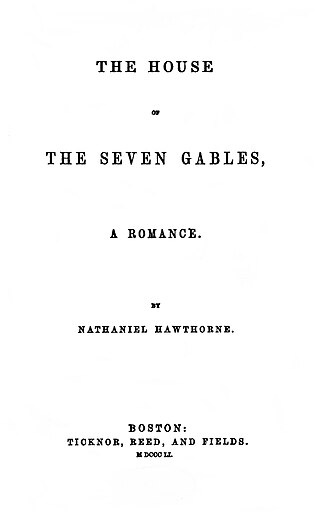
The House of the Seven Gables: A Romance is a Gothic novel written beginning in mid-1850 by American author Nathaniel Hawthorne and published in April 1851 by Ticknor and Fields of Boston. The novel follows a New England family and their ancestral home. In the book, Hawthorne explores themes of guilt, retribution, and atonement, and colors the tale with suggestions of the supernatural and witchcraft. The setting for the book was inspired by the Turner-Ingersoll Mansion, a gabled house in Salem, Massachusetts, belonging to Hawthorne's cousin Susanna Ingersoll, as well as ancestors of Hawthorne who had played a part in the Salem Witch Trials of 1692. The book was well received upon publication and has been adapted several times to film and television.

Mount Tom is a mountain located in Grafton County, New Hampshire, about 1.5 miles (2.4 km) southwest of the height of land of Crawford Notch.
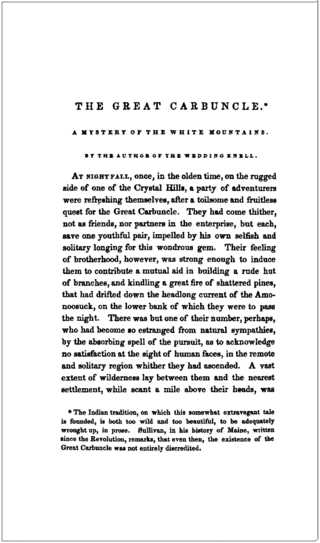
"The Great Carbuncle" is a short story by Nathaniel Hawthorne. It first appeared in December 1835 before being included in the collection Twice-Told Tales in 1837.

"Egotism; or, The Bosom-Serpent" is a short story by Nathaniel Hawthorne published in 1843 in The United States Magazine and Democratic Review in New York.

The Token (1829–1842) was an American annual, illustrated gift book, containing stories, poems and other light and entertaining reading. In 1833, it became The Token and Atlantic Souvenir.
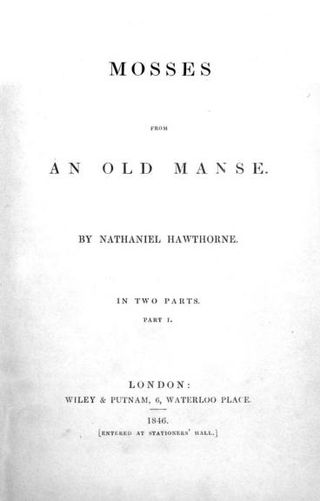
"Hawthorne and His Mosses" (1850) is an essay and critical review by Herman Melville of the short story collection Mosses from an Old Manse written by Nathaniel Hawthorne in 1846. Published pseudonymously by "a Virginian spending July in Vermont", it appeared in The Literary World magazine in two issues: August 17 and August 24, 1850. It has been called the "most famous literary manifesto of the American nineteenth century."

"The Artist of the Beautiful" is a short story by the American writer, Nathaniel Hawthorne. The story was first published in 1844 and was included two years later in the collection Mosses from an Old Manse published by Wiley & Putnam.

"The Great Stone Face" is a short story published by Nathaniel Hawthorne in 1850. The story reappeared in a full-length book, The Snow-Image, and Other Twice-Told Tales, published by Ticknor, Reed & Fields in 1852. It has since been republished and anthologized many times.
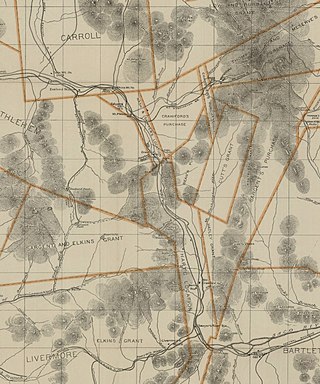
The Crawford family of the White Mountains were a family who moved to New Hampshire's White Mountains in the 1790s from Guildhall, Vermont, and were pioneers in establishing a tourist industry in that area. Abel Crawford and his father-in-law, Eleazar Rosebrook, began the effort, and one of Abel's sons, Ethan Allen Crawford, made significant contributions. Another son, Thomas Jefferson Crawford, continued the work; and Ethan's wife, Lucy, also contributed. Their work was in the area then known as White Mountain Notch, subsequently called Crawford Notch.

The Willey House at Crawford Notch in the White Mountains of New Hampshire is associated principally with a tragedy of August 28, 1826, in which seven members of the Willey family and two other people died. Out of that event came a boost to the nascent tourism industry of the area.




















